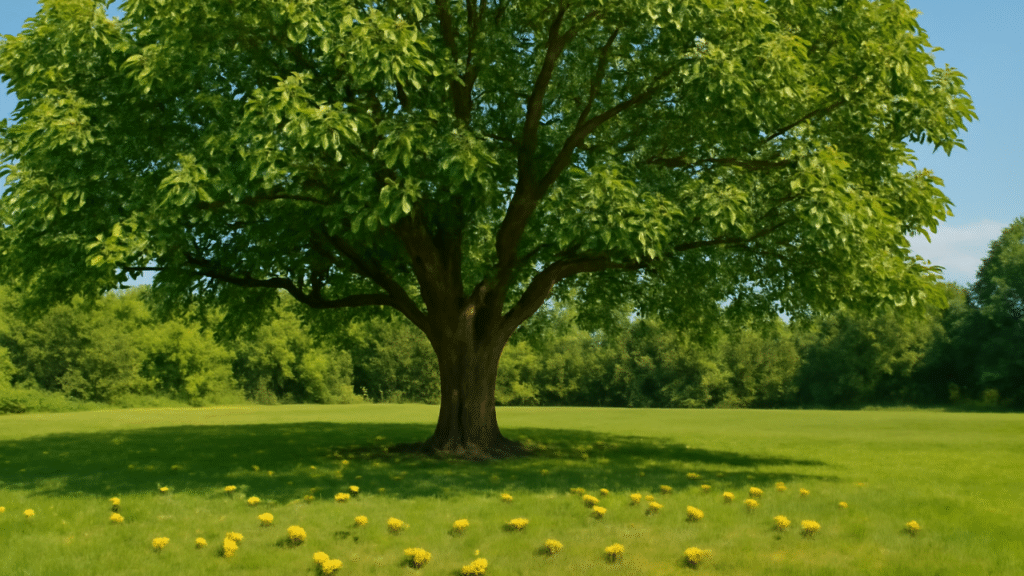
Top 7 Walnut Tree Varieties for Nut Production and Landscaping: Expert Guide to Choosing the Right One
Planting a walnut tree might seem simple—until you realize just how many walnut tree varieties exist, each with its own strengths, climate preferences, and unique benefits 🌳. Whether you’re dreaming of baskets full of delicious homegrown nuts or a beautiful, shade-giving centerpiece for your yard, choosing the right variety can make all the difference.
Here’s the challenge: Not all walnut trees are created equal. Some are prized for their high nut yield, others for their timber, while a few shine in landscaping for their stunning form and foliage. So how do you know which one is right for your space, climate, and goals?

This expert guide is here to help. We’ll walk you through the top 7 walnut tree varieties—handpicked for both nut production and ornamental appeal—so you can confidently choose the perfect tree for your needs. Whether you’re a first-time grower or upgrading your orchard, this guide will give you the clarity and confidence to grow smarter 🌱. Keep reading—your ideal walnut tree is just a few scrolls away!
Table of Contents
Toggle🌰 Why Choose Walnut Trees? Benefits for Nut Production and Landscaping 🌰
Hey there, future walnut grower! 😊 If you’re wondering whether walnut trees are worth the effort, let me assure you—they absolutely are! 🌳 These amazing trees offer incredible value, whether you’re dreaming of harvesting your own nuts or transforming your yard into a stunning landscape. 🌿 Let’s break down why walnut trees should be on your radar, with practical reasons that’ll make you excited to plant one (or more) today. 🚀

🌟 Economic and Nutritional Value of Walnuts 🌟
Walnuts aren’t just tasty; they’re a goldmine! 💰 These nuts are in high demand for snacks, baking, and even health foods, making them a smart choice if you’re thinking of selling or just saving on grocery bills. 🛒 A single mature tree can produce enough nuts to share with family or turn into a small side hustle. 🌰
Plus, walnuts are a nutritional powerhouse. 🥜 Packed with omega-3 fatty acids, antioxidants, and protein, they’re a heart-healthy snack you can feel good about eating. ❤️ Growing your own means fresh, organic walnuts right from your backyard—no store-bought bag can compare! 🏡 Ready to boost your diet and wallet? Walnut trees are your answer. 😋

🌿 Aesthetic and Environmental Benefits for Landscaping 🌿
Not into nuts? No problem! 😎 Walnut trees are landscaping superstars. 🌳 With their tall, majestic growth and wide, shady canopies, they’re perfect for creating cool, relaxing spots in your yard. 🌴 Imagine sipping lemonade under your own walnut tree on a hot summer day—pure bliss! ☀️
They also act as natural windbreaks, protecting your property, and can even increase your home’s value with their timeless beauty. 🏠 On top of that, walnut trees help the planet by absorbing carbon dioxide and enriching the soil as their leaves decompose. 🌍 Want a gorgeous, eco-friendly yard? These trees deliver big time. 🌱
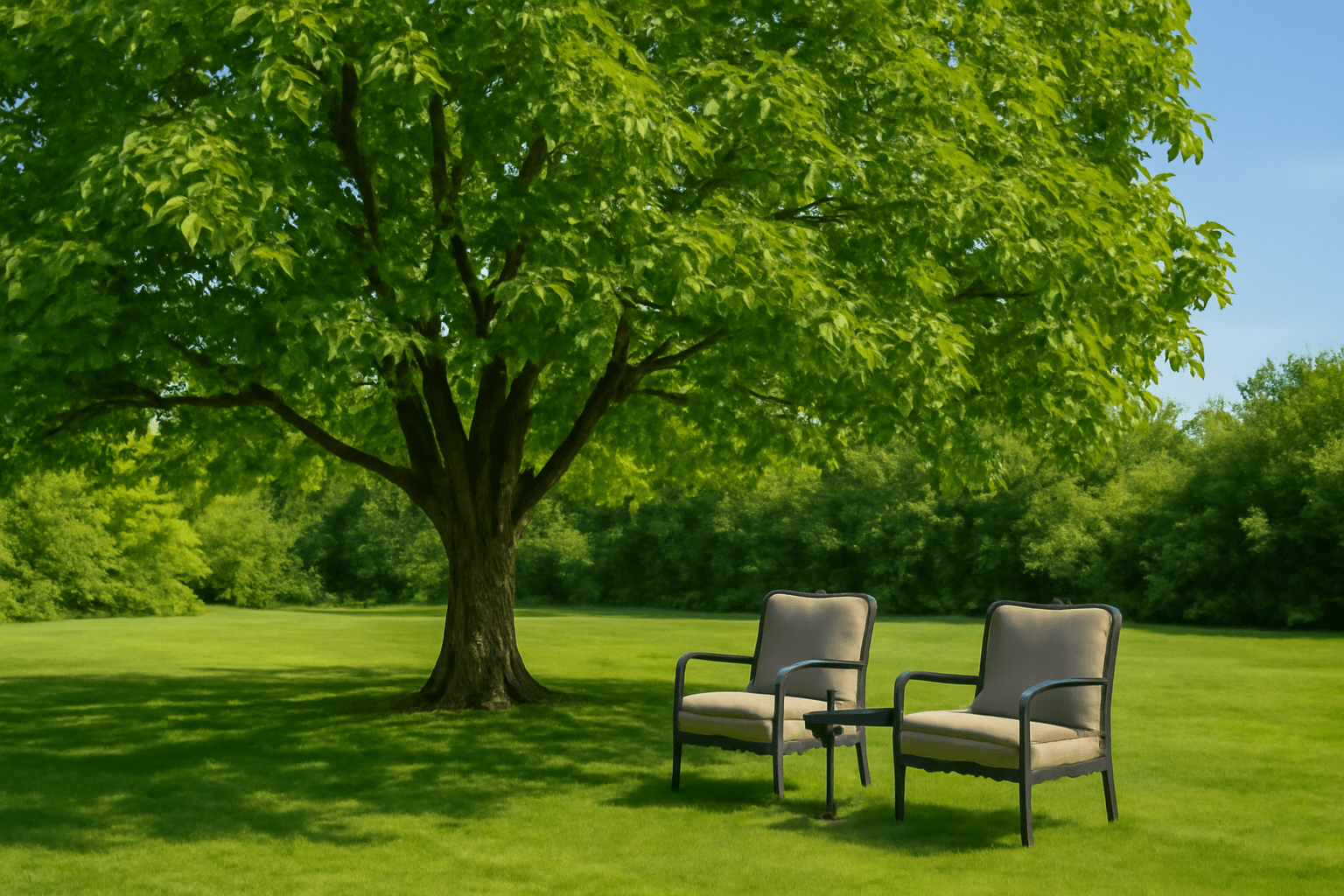
🌻 Why This Matters to You 🌻
Choosing to plant a walnut tree isn’t just about nuts or looks—it’s about building a sustainable, rewarding space for you and your family. 👨👩👧 Whether you’re a beginner gardener or a seasoned pro, these trees offer something special: a mix of profit, health, and beauty that’s hard to beat. 🌟 Stick with us as we dive into the best varieties to match your goals, and you’ll be on your way to a thriving walnut journey! 🚀
🌳 Key Factors to Consider When Choosing a Walnut Tree Variety 🌳
Choosing the right walnut tree variety can feel overwhelming, especially if you’re new to gardening or nut production. 😅 The good news? By focusing on a few key factors, you can narrow down your options and find a tree that thrives in your environment while meeting your goals—whether that’s harvesting delicious nuts, enhancing your landscape, or both. 🌰 In this section, we’ll walk you through the most important considerations to ensure you make an informed decision. 🌱

🌍 Climate and Hardiness Zones 🌍
Walnut trees are hardy, but not all varieties can handle every climate. 🌦️ Matching your tree to your local weather conditions is the first step to success. 🚀
Why It Matters: Some walnut varieties thrive in mild, Mediterranean-like climates, while others can withstand harsh winters. ❄️ Planting a variety unsuited to your area may result in poor growth, low nut yields, or even tree death. 😔
Understanding Hardiness Zones: The USDA Hardiness Zone Map divides regions based on average winter temperatures. 🗺️ Walnut trees typically grow best in Zones 4-9, but specific varieties have narrower ranges. For example, the Carpathian Walnut tolerates colder climates (down to Zone 4), while some English Walnut cultivars prefer warmer areas (Zones 6-9). ☀️
Actionable Tip: Look up your hardiness zone using a free online tool like the USDA Zone Finder (or similar resources). 📱 Write down your zone and compare it to the requirements of the varieties you’re considering. 📝
Beginner Note: If you’re unsure about your climate’s extremes (like late frosts or hot summers), check with a local nursery or agricultural extension service for advice on walnut trees that perform well in your area. 🏡
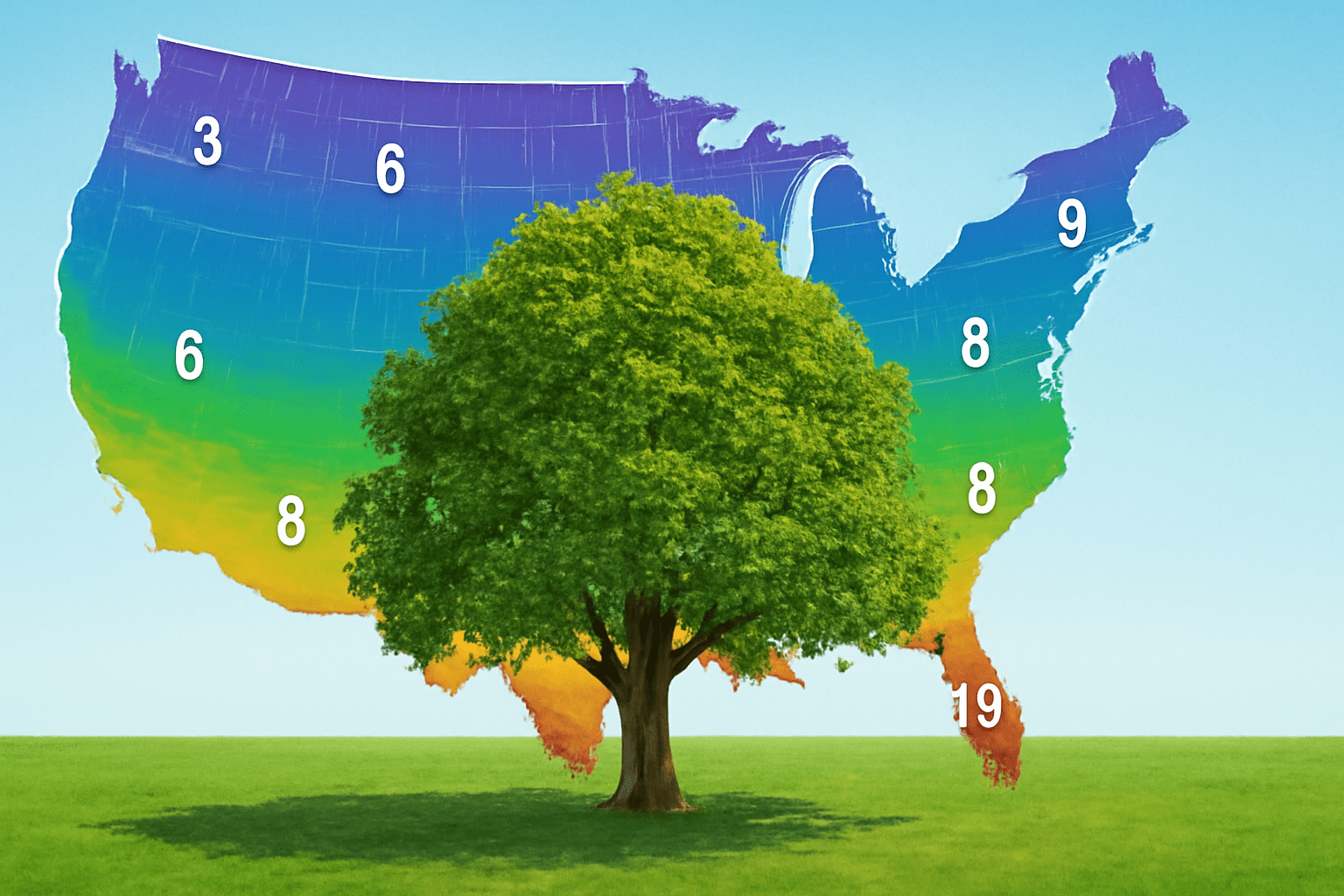
🌲 Space and Growth Habits 🌲
Walnut trees are known for their impressive size, but their space requirements vary by variety. 🌳 Before planting, assess how much room you have and how the tree will fit into your property over time. ⏳
Why It Matters: Most walnut trees grow 40-60 feet tall with a canopy spread of 30-50 feet or more. 🌴 Their extensive root systems can also interfere with nearby structures or plants. 🌱 Planting in a cramped space can lead to stunted growth or damage to your property. 🚧
Small vs. Large Properties: If you have a small yard, consider smaller or dwarf varieties like certain English Walnut hybrids or the Heartnut, which can be managed with pruning. ✂️ For larger properties or orchards, Black Walnut or Chandler varieties can spread out without issue. 🏞️
Root System Concerns: Walnut trees, especially Black Walnuts, produce juglone—a chemical that can inhibit the growth of nearby plants. ⚠️ Ensure there’s enough space to avoid affecting gardens or sensitive crops. 🌾
Actionable Tip: Measure the available space in your yard or field. 📏 As a rule of thumb, allow at least 30-40 feet between walnut trees and other plants or structures to accommodate mature growth. 🌳
Beginner Note: Think long-term—walnut trees can live for decades. 🕰️ Visualize how the tree will look in 10 or 20 years when planning its location. 😊
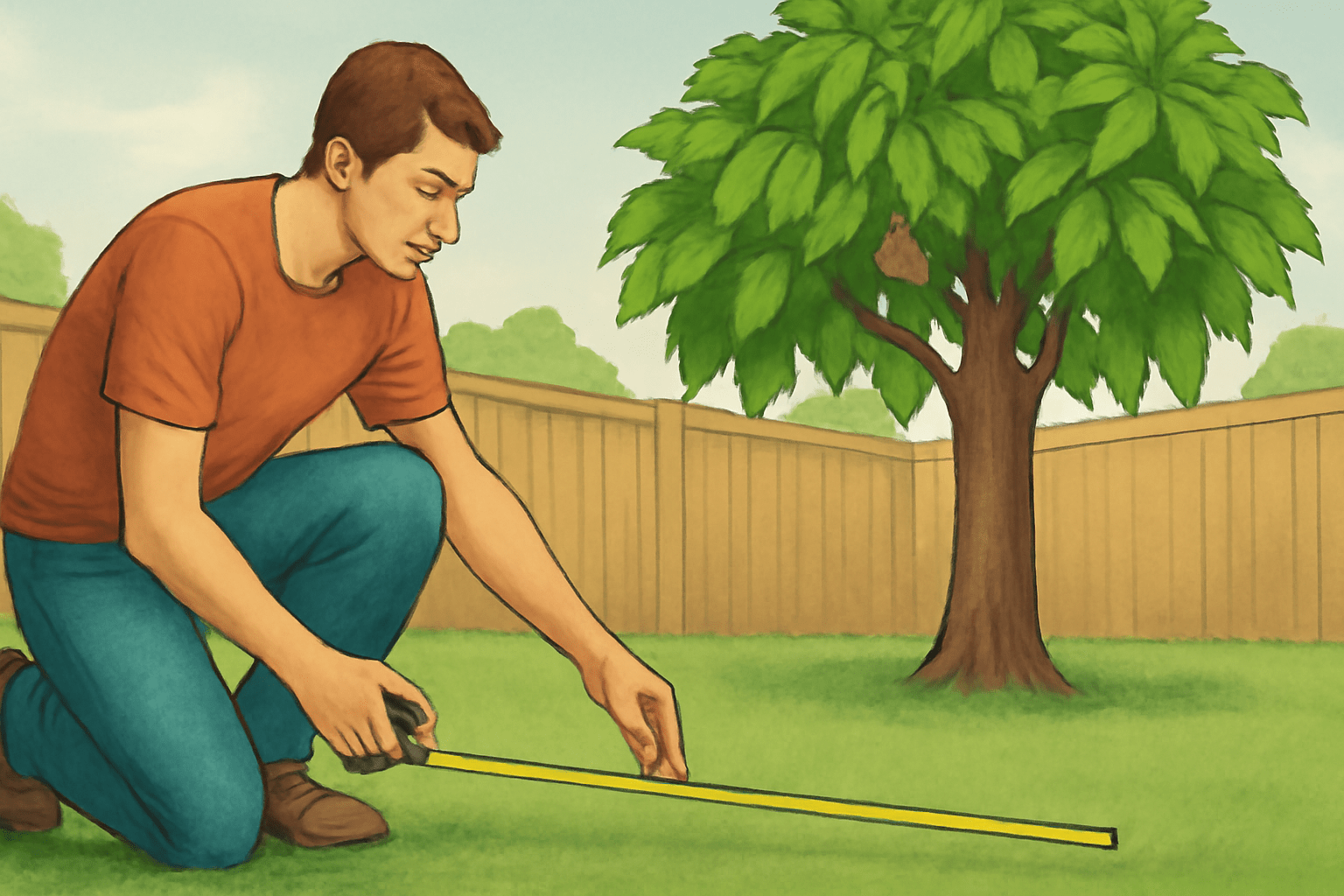
🥜 Nut Yield and Quality 🥜
If your primary goal is nut production, the yield and quality of the walnuts are critical factors. 🌰 Different varieties produce nuts at different rates, sizes, and flavors, affecting both personal enjoyment and potential profit. 💰
Why It Matters: Some walnut trees, like the Chandler variety, are bred for high yields and are popular among commercial growers. 🚜 Others, like the Butternut, produce smaller quantities but offer unique flavors. 😋 Knowing what to expect helps align your choice with your goals. 🎯
Yield Timelines: Most walnut trees take 4-7 years to start producing nuts, with peak production often after 10-15 years. ⏰ Varieties like English Walnut can yield 50-100 pounds of nuts per tree annually at maturity, depending on conditions. 🌳
Nut Characteristics: Consider size, shell thickness, and taste. 🍴 For example, English Walnuts have thinner shells (easier to crack) and a mild flavor, while Black Walnuts have thicker shells and a stronger, earthier taste. 🌿
Actionable Tip: Decide if you’re growing for personal use, selling at markets, or both. 🛒 High-yield varieties are ideal for profit, while unique flavors might be better for home use or specialty markets. 🏪
Beginner Note: Don’t expect instant results—patience is key with walnut trees. 🕒 Focus on proper care in the early years to maximize future yields. 🌱
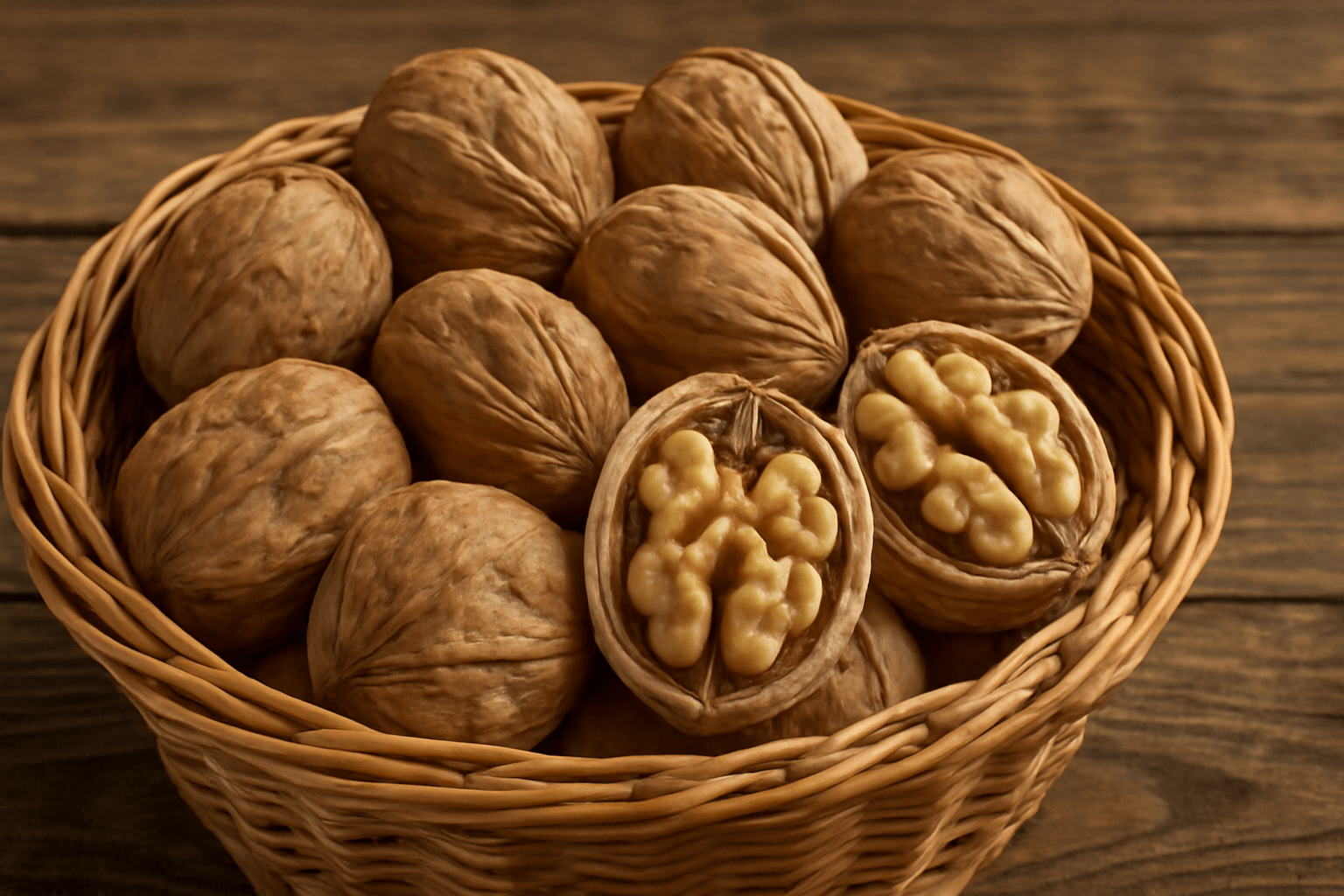
🛡️ Disease Resistance and Maintenance 🛡️
Walnut trees are generally tough, but they’re not immune to pests and diseases. 🐜 Choosing a variety with good resistance can save you time, money, and frustration down the road. 💪
Why It Matters: Common issues like walnut blight, anthracnose, and pests such as the walnut husk fly can reduce yields or damage trees. 😷 Some varieties are naturally more resistant, while others require vigilant care. 👀
Resistant Varieties: For instance, certain English Walnut hybrids have been developed for better disease resistance, while Butternut trees are more susceptible to canker and often struggle in humid regions. 🌧️
Maintenance Needs: Consider how much time you can dedicate. ⏰ Walnut trees need regular watering (especially when young), occasional pruning, and monitoring for pests. 🌳 If you prefer low-maintenance options, prioritize hardy varieties suited to your climate. 😎
Actionable Tip: Research common walnut tree diseases in your area (local extension services can help) and choose a variety known for resistance to those specific threats. 📚 Also, plan for basic care routines like mulching to retain moisture and reduce weed competition. 🌿
Beginner Note: Start with a forgiving variety if you’re new to tree care. 🌱 Over time, you can experiment with more challenging types as you gain experience. 😊
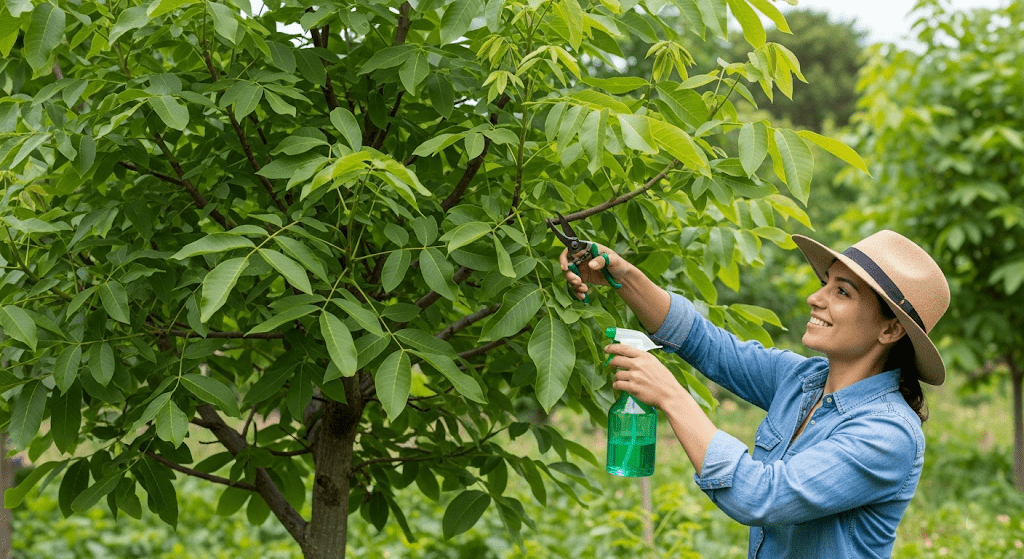
📋 Quick Checklist for Choosing Your Walnut Tree Variety 📋
To make this process even easier, use this simple checklist to evaluate your needs and conditions before deciding on a variety: ✅
- What’s my USDA Hardiness Zone, and does the variety match it? 🗺️
- Do I have enough space (30-50 feet of spread) for the tree at maturity? 📏
- Am I growing primarily for nuts, landscaping, or both? 🌰
- How much time can I commit to maintenance like watering and pest control? ⏰
- Are there specific diseases or pests in my area I should prepare for? 🐞
By answering these questions, you’ll be well on your way to picking the perfect walnut tree for your property. 🌳
🌟 Why These Factors Matter: Solving Real Problems 🌟
Understanding these key factors helps solve common pain points for walnut tree growers. 😊 For example, choosing a variety unsuited to your climate can waste years of effort, while ignoring space needs might crowd your yard or harm nearby plants. 🌱 By taking a thoughtful approach now, you’re setting yourself up for a thriving tree that delivers nuts, beauty, or both for decades to come. 🌿
🌳 Top 7 Walnut Tree Varieties for Nut Production and Landscaping 🌳
Welcome to the heart of our guide! 💖 If you’ve been wondering which walnut tree is the perfect fit for your yard or orchard, you’re in the right place. 😊 Below, we’ve handpicked the top 7 walnut tree varieties for nut production and landscaping. 🌿 Each one comes with a clear breakdown of its features, pros, cons, and ideal uses—making it super easy for beginners to choose. 🌱 Whether you’re after tasty nuts or a stunning shade tree, we’ve got you covered with practical tips to help you decide. 🌟 Let’s dive in! 🌰

🌿 1. English Walnut (Juglans regia) 🌿
Best For: Nut production and landscaping 🌳
Key Features: Grows 40-60 feet tall with a 30-50 foot spread. Produces medium-sized nuts with thin shells and a mild, sweet flavor. 🥜 Yields start in 4-6 years. ⏰
Climate Suitability: Thrives in USDA Zones 5-9; prefers mild winters and warm summers. ☀️
Pros: High nut yields (50-100 lbs per tree at maturity), easy-to-crack shells, and beautiful canopy for shade. 🌴
Cons: Needs protection from late frosts; less cold-hardy than some varieties. ❄️
Best Suited For: Home gardeners and small orchards looking for versatile trees that deliver both nuts and aesthetics. 🏡
Quick Tip: Plant in well-drained soil with full sun for the best nut production. 🌞

🍂 2. Black Walnut (Juglans nigra) 🍂
Best For: Nut production and timber 🪵
Key Features: Reaches 50-75 feet tall with a wide 50-60 foot spread. Nuts are large with a bold, earthy flavor but have thick, hard shells. 🌰
Climate Suitability: Hardy in USDA Zones 4-9; handles cold winters well. ❄️
Pros: Very durable, high-quality timber value, and unique nut taste for specialty markets. 💰
Cons: Produces juglone, a chemical toxic to many nearby plants. ⚠️ Slower to yield nuts (6-8 years). ⏳
Best Suited For: Large properties where juglone won’t affect gardens; great for long-term investment. 🌳
Quick Tip: Pair with juglone-tolerant plants like grasses or daylilies to avoid landscaping issues. 🌾

🌞 3. Northern California Black Walnut (Juglans hindsii) 🌞
Best For: Landscaping and drought tolerance 💧
Key Features: Grows 40-60 feet tall with a broad canopy. Nuts are smaller, often used as rootstock for grafting other varieties. 🌱
Climate Suitability: Best in USDA Zones 7-9; loves dry, warm climates. ☀️
Pros: Extremely drought-tolerant and hardy in tough conditions; great for erosion control. 🏜️
Cons: Lower nut yields and quality compared to English or Chandler varieties. 😔
Best Suited For: Western U.S. gardeners needing a tough tree for landscaping over nut production. 🌄
Quick Tip: Use as a shade tree in arid regions—minimal watering needed once established! 💦

❄️ 4. Carpathian Walnut ❄️
Best For: Cold climates and nut production 🥶
Key Features: A cold-hardy English Walnut hybrid, growing 40-50 feet tall. Nuts are similar to English Walnuts with good flavor. 🥜
Climate Suitability: Excels in USDA Zones 4-7; withstands harsh winters. ❄️
Pros: Perfect for northern growers, reliable nut production in cold areas. 🌨️
Cons: Slightly slower growth and smaller yields than warmer-climate varieties. ⏳
Best Suited For: Gardeners in colder regions wanting tasty walnuts without frost damage. 🏔️
Quick Tip: Protect young trees from wind in extreme winters for best results. 🌬️

💖 5. Heartnut (Juglans ailantifolia var. cordiformis) 💖
Best For: Small spaces and unique nuts 🥰
Key Features: Smaller tree (30-50 feet tall) with a narrower spread. Produces cute heart-shaped nuts with a mild taste. 💕
Climate Suitability: Hardy in USDA Zones 4-8; adaptable to various conditions. 🌈
Pros: Compact size for smaller yards, fun nut shape for novelty, decent yields. 🌳
Cons: Nuts can be harder to harvest in large quantities; less common commercially. 😕
Best Suited For: Homeowners with limited space who want something unique and pretty. 🏡
Quick Tip: Great for kids to enjoy—those heart-shaped nuts are a conversation starter! 😊

🌲 6. Butternut (Juglans cinerea) 🌲
Best For: Specialty nuts and natural landscapes 🌳
Key Features: Grows 40-60 feet tall with oval, sweet-tasting nuts. Often called “white walnut” for its lighter bark. 🥜
Climate Suitability: Suited for USDA Zones 3-7; loves cooler climates. ❄️
Pros: Delicious, buttery nuts; blends beautifully into natural or woodland settings. 🌿
Cons: Susceptible to butternut canker disease, reducing availability and lifespan. 😷
Best Suited For: Northern growers in rural areas prioritizing flavor over yield. 🏞️
Quick Tip: Check for disease-resistant cultivars to improve your chances of success. 🛡️

🌟 7. Chandler Walnut 🌟
Best For: High nut production 🚀
Key Features: Grows 40-50 feet tall with exceptional yields. Nuts are large, light-colored, and easy to shell. 🥜
Climate Suitability: Best in USDA Zones 5-9; prefers mild climates like California. ☀️
Pros: Industry favorite for commercial orchards; produces up to 100+ lbs per tree. 💰
Cons: Needs consistent care and pollination (often paired with another variety like Franquette). 🌱
Best Suited For: Serious growers or small businesses focused on maximizing nut output. 🌾
Quick Tip: Plant a pollinator nearby to boost yields—Chandler loves company! 🌻

🌰 Quick Comparison Table for Easy Decision-Making 🌰
Not sure which variety to pick? Use this handy table to compare key stats at a glance:
| Variety | Height | USDA Zones | Nut Yield | Best Use | Special Note |
| English Walnut | 40-60 ft | 5-9 | High (50-100 lbs) | Nuts & Landscaping | Beginner-friendly 🌞 |
| Black Walnut | 50-75 ft | 4-9 | Moderate | Nuts & Timber | Juglone toxicity ⚠️ |
| N. CA Black Walnut | 40-60 ft | 7-9 | Low | Landscaping | Drought-tolerant 💧 |
| Carpathian Walnut | 40-50 ft | 4-7 | Moderate | Nuts in Cold Climates | Winter-hardy ❄️ |
| Heartnut | 30-50 ft | 4-8 | Moderate | Small Yards & Unique Nuts | Heart-shaped nuts 💖 |
| Butternut | 40-60 ft | 3-7 | Low-Moderate | Specialty Nuts | Disease risk 🛡️ |
| Chandler Walnut | 40-50 ft | 5-9 | Very High (100+ lbs) | Commercial Production | Needs pollinator 🌻 |
🌳 Why These Varieties Stand Out 🌳
We’ve chosen these 7 walnut tree varieties because they solve real problems for growers like you. 🌱 Whether you’re limited by space, climate, or maintenance time, there’s an option here to match your needs. 😊 From the high-yielding Chandler for profit-driven orchards to the adorable Heartnut for small backyards, each tree brings something special to the table. 🌟 Our goal? To help you feel confident and excited about planting your first (or next) walnut tree! 🚀
🌳 How to Plant and Care for Walnut Trees: Beginner’s Guide 🌳
Welcome to the practical part of growing walnut trees! 🌱 If you’ve chosen your variety (or are still deciding), this section will walk you through the essentials of planting and caring for your walnut tree. 😊 Don’t worry if you’re new to gardening— we’ve kept things simple, clear, and actionable. ✨ With these beginner-friendly tips, you’ll have the know-how to help your tree thrive, whether you’re after tasty nuts or a gorgeous landscape addition. 🌿 Let’s get started! 🌰

🌱 Planting Tips for Success 🌱
Planting a walnut tree the right way sets the foundation for years of growth. 🌳 Here’s how to do it step-by-step, even if you’ve never planted a tree before. 🥰
Best Time to Plant: Aim for early spring or fall when the weather is cool. 🌸 This gives roots time to settle before extreme heat or cold hits. ❄️ In warmer climates (USDA Zones 7-9), fall planting often works best. 🍂
Soil Requirements: Walnut trees love well-drained, slightly acidic soil (pH 6.0-7.0). 🌱 Avoid heavy clay or soggy areas where water pools—roots can rot. 🚫 If you’re unsure about your soil, a quick test kit from a garden store can tell you the pH. 📏
Site Selection: Pick a spot with full sun (at least 6-8 hours daily) and plenty of space. ☀️ Remember, most walnut trees spread 30-50 feet wide at maturity, so keep them away from buildings or power lines. 🏡
Spacing Guidelines: Plant trees at least 30-40 feet apart if you’re growing more than one. 🌲 This prevents overcrowding and ensures each tree gets enough light and nutrients. 🌞
How to Plant: Dig a hole twice as wide and as deep as the root ball. 🕳️ Place the tree so the top of the root ball is level with the ground, backfill with soil, and water deeply. 💧 Add a 2-3 inch layer of mulch around the base (but not touching the trunk) to retain moisture. 🌿
Actionable Tip: Stake young trees for the first year if your area is windy— this helps them stay upright while roots establish. 🌬️
💧 Watering, Fertilizing, and Pruning 💧
Once your walnut tree is in the ground, regular care keeps it healthy and productive. 🌳 Here’s what you need to know about the basics. 📝
Watering Needs: Young trees (first 1-3 years) need consistent moisture—water deeply once a week, giving them 1-2 inches of water, especially during dry spells. 💦 Mature trees are more drought-tolerant but still benefit from occasional deep watering in hot summers. ☀️
Fertilizing: Feed your tree annually in early spring with a balanced fertilizer (like 10-10-10) to boost growth and nut production. 🌱 Avoid over-fertilizing, as too much nitrogen can lead to lush leaves but fewer nuts. 🚫 A soil test can help you determine exact needs. 🔬
Pruning Basics: Prune in late winter or early spring before new growth starts. ✂️ Remove dead, damaged, or crossing branches to improve air circulation and shape the tree. 🌳 For young trees, focus on creating a strong central leader (main trunk) by trimming competing branches. 💪
Beginner Note: Don’t stress about perfection—pruning is more about maintenance than art. 😊 Start small and watch tutorials if you’re unsure. A clean, sharp pair of pruning shears is your best friend! 🛠️
Actionable Tip: Set a reminder on your phone for watering and fertilizing schedules during the first few years—consistency is key for young trees. 📱
🛡️ Protecting Against Pests and Diseases 🛡️
Walnut trees are tough, but they’re not invincible. 💪 Knowing common threats and how to handle them will save you headaches down the road. 😅
Common Pests: Watch for walnut husk flies (they damage nuts by laying eggs in husks) and aphids (they suck sap from leaves). 🐜 Sticky traps can catch flies, while insecticidal soap works for aphids if infestations are small. 🌿
Frequent Diseases: Walnut blight (causes black spots on leaves and nuts) and anthracnose (leaf spotting) are common in humid areas. 🌧️ Choose resistant varieties if possible, and keep the area around the tree clear of fallen leaves and debris to reduce disease risk. 🧹
Prevention Tips: Promote good air circulation by pruning crowded branches. 🌬️ Avoid overhead watering, as wet leaves invite fungal issues—use a soaker hose or drip irrigation instead. 💧 If you spot early signs of trouble (like discolored leaves), act fast with organic or chemical treatments recommended for walnuts. 🛠️
Beginner Note: Don’t panic if you see a few bugs or spots. 😊 Small issues often resolve with basic care. For bigger problems, reach out to a local extension service for free advice tailored to your area. 📞
Actionable Tip: Inspect your tree monthly during the growing season. 🔍 Catching pests or diseases early is much easier than fixing a full-blown problem! 🐞
📅 Seasonal Care Calendar for Walnut Trees 📅
To make care even simpler, here’s a quick seasonal guide to keep your walnut tree happy year-round: 🌈
- Spring: Plant new trees, fertilize, and start weekly watering for young trees. 🌸 Prune before buds open if needed. ✂️
- Summer: Monitor for pests and water deeply during dry spells. ☀️ Check nuts for husk fly damage as they develop. 🐜
- Fall: Harvest nuts when husks split (wear gloves—husks stain!). 🍂 Mulch around the base to protect roots for winter. 🌿 Plant new trees in warmer zones. 🌳
- Winter: Prune dormant trees. ❄️ Protect young trees from frost or heavy snow with burlap wraps if you’re in a cold area. 🧣
Quick Tip: Bookmark this calendar or jot it down—having a plan takes the guesswork out of tree care! 🗓️
🌟 Why Proper Care Matters 🌟
Planting and caring for a walnut tree isn’t just about sticking it in the ground and hoping for the best. 🌱 The right start and ongoing attention ensure your tree grows strong, resists problems, and rewards you with nuts or shade for decades. 🌳 Think of it as a small investment now for big returns later—whether that’s a bountiful harvest or a stunning backyard centerpiece. 🌿 You’ve got this! 😊
🌳Common Challenges and Solutions for Growing Walnut Trees 🌳
Growing walnut trees can be incredibly rewarding, but like any plant, they come with their share of challenges. 🌱 Don’t worry—most issues are manageable with a little know-how! 😊 In this section, we’ll cover the most common problems walnut tree growers face and provide practical, beginner-friendly solutions to keep your tree healthy and thriving. 🌿 Whether it’s pests, poor growth, or nut production hiccups, we’ve got you covered. Let’s tackle these challenges together! 🌰

🐛 Problem 1: Pests Damaging Nuts or Leaves 🐛
Pests can be a real nuisance for walnut trees, affecting both the tree’s health and your nut harvest. 😣
Common Culprits: Walnut husk flies are a big issue—they lay eggs in nut husks, causing maggots to ruin the crop. 🐜 Aphids suck sap from leaves, weakening the tree, while codling moths can also target nuts. 🦋
Signs to Watch For: Blackened or mushy nut husks (husk flies), sticky residue or curled leaves (aphids), or small holes in nuts (codling moths). 🔎
Solutions:
- Use sticky traps or yellow sticky cards near the tree to catch husk flies before they lay eggs. 🪤
- Spray insecticidal soap or neem oil for aphids—safe for beginners and effective on small infestations. 🌿
- For codling moths, apply pheromone traps or a targeted insecticide (check with a local nursery for safe options). 🛡️
Prevention Tip: Regularly inspect nuts and leaves during the growing season, especially in summer when pests are active. 🌞 Clean up fallen nuts and debris to reduce hiding spots. 🧹
Beginner Note: Start with non-toxic options like traps or soaps before moving to stronger chemicals. A little vigilance goes a long way! 🔍
🍂 Problem 2: Diseases Affecting Tree Health 🍂
Diseases can strike walnut trees, especially in humid or wet conditions, leading to reduced growth or nut loss. 🌧️
Common Issues: Walnut blight (black spots on leaves, twigs, and nuts), anthracnose (brown leaf spots that spread), and root rot (caused by soggy soil). 🍃
Signs to Watch For: Dark lesions on nuts or leaves (blight), premature leaf drop (anthracnose), or wilting despite watering (root rot). 😷
Solutions:
- For blight, apply a copper-based fungicide in early spring before rain starts—wet weather spreads this disease. 🌧️ Prune infected branches and dispose of them far from the tree. ✂️
- Combat anthracnose by raking up fallen leaves (they harbor spores) and improving air circulation with light pruning. 🍂
- Fix root rot by improving drainage—avoid overwatering and consider raised planting if your soil stays soggy. 💧
Prevention Tip: Choose disease-resistant varieties if your area is prone to specific issues (e.g., certain English Walnut hybrids resist blight better). 🛡️
Beginner Note: Don’t panic over a few spots. 😊 Focus on prevention with good hygiene (clean up debris) and proper watering habits. 🧹
🌧️ Problem 3: Poor Growth or Lack of Nut Production 🌧️
If your walnut tree isn’t growing well or producing nuts as expected, environmental or care factors might be to blame. 😔
Common Causes: Insufficient sunlight, poor soil nutrients, inadequate watering, or late frosts damaging buds. ❄️ Young trees also take 4-7 years to bear nuts, so patience is key. 🕒
Signs to Watch For: Stunted growth, yellowing leaves (nutrient deficiency), or no nuts after several years (pollination or stress issues). 🌱
Solutions:
- Ensure the tree gets 6-8 hours of direct sun daily—relocate young trees if they’re shaded by buildings or other plants. 🌞
- Test soil and fertilize annually with a balanced mix (like 10-10-10) if nutrients are low. Add compost for organic enrichment. 🌿
- Water consistently (1-2 inches weekly for young trees) during dry spells—drought stress delays nut production. 💦
- For no nuts, check if your variety needs a pollinator (e.g., Chandler often pairs with Franquette). Plant a second tree nearby if needed. 🌳
Prevention Tip: Protect young trees from late spring frosts with burlap covers or by planting in a frost-sheltered spot. 🧣
Beginner Note: Don’t expect nuts right away—focus on building a strong, healthy tree in the early years. 🌱 Growth now means nuts later! 🥰
⚠️ Problem 4: Juglone Toxicity Affecting Nearby Plants ⚠️
Walnut trees, especially Black Walnuts, release juglone—a chemical that can harm nearby plants, making landscaping tricky. 😬
Common Issue: Plants near the tree (within 50-60 feet) wilt, yellow, or die due to juglone from roots, leaves, and husks. 🌿
Signs to Watch For: Struggling vegetables, flowers, or shrubs close to the walnut tree, especially tomatoes, potatoes, or azaleas, which are highly sensitive. 🌸
Solutions:
- Plant juglone-tolerant species nearby, such as grasses, daylilies, hostas, or certain trees like maples. Look up compatible plants for your zone. 🌱
- Keep sensitive crops or gardens at least 50 feet away from the tree’s drip line (the outer edge of the canopy). 📏
- Remove fallen leaves, husks, and twigs regularly, as they release juglone into the soil over time. 🧹
Prevention Tip: Plan your yard layout before planting a walnut tree—place it in an area where juglone won’t affect your favorite plants. 🌳
Beginner Note: Juglone isn’t harmful to humans or animals, just certain plants. Stick to resistant companions, and you’ll be fine! 😊
🛠️ Quick Troubleshooting Checklist 🛠️
Stuck on a problem? Use this checklist to pinpoint issues and act fast: 📋
- Pests? Check nuts and leaves for damage; set traps or use safe sprays like neem oil. 🐞
- Disease? Look for spots or wilting; prune affected parts and improve drainage or air flow. 🍂
- No Growth/Nuts? Verify sun, water, and soil needs; consider a pollinator if yields are low. 🌞
- Juglone Issues? Identify struggling plants near the tree; replace with tolerant varieties. 🌱
Quick Tip: Keep a garden journal to track issues and solutions—it’ll help you spot patterns and improve over time! 📝
🌟 Why Solving Challenges Matters 🌟
Facing challenges with walnut trees is normal, especially for beginners. 😊 The good news? Most problems have straightforward fixes if you catch them early. 🛠️ By addressing pests, diseases, growth issues, and juglone concerns, you’re not just saving your tree—you’re ensuring years of shade, beauty, or nut harvests. 🌰 Think of each challenge as a learning step toward becoming a confident grower. You’ve got this! 💪
🌳 Conclusion and Call to Action 🌳
Congratulations on making it to the end of our expert guide on walnut trees! 🎉 By now, you’ve learned about the top varieties for nut production and landscaping, how to plant and care for them, and solutions to common challenges. 🌟 Growing a walnut tree—whether for delicious nuts, stunning shade, or even timber—is a rewarding journey that pays off for years, even decades. 🥰 We’ve broken down the process into simple, actionable steps so that even beginners can feel confident getting started. 🌰
Walnut trees aren’t just plants; they’re long-term investments in your yard, your harvest, and even your environment. 🌍 From the high-yielding Chandler to the cold-hardy Carpathian, there’s a variety for every climate, space, and goal. 🌱 With the right care, you’ll watch your tree grow from a small sapling into a towering beauty that provides both practical benefits and a sense of pride. 😊 Remember, patience is key—those first nuts might take a few years, but the wait is worth it! 🕒
Key Takeaway: Start small, choose the right variety for your needs, and stick to consistent care. 💪 Whether you’re battling pests like husk flies or navigating juglone toxicity, every challenge is a chance to learn and improve as a grower. 🌿 You’ve got all the tools and tips you need right here to succeed. ✨

🌱 Your Next Steps: Call to Action 🌱
Ready to turn your walnut tree dreams into reality? Here’s what to do next: 🚀
- Pick Your Variety 🌿: Review Section 3 and select the walnut tree that fits your climate, space, and goals. Not sure? Start with a beginner-friendly option like the English Walnut. 🥜
- Get Planting 🌞: Follow the steps in Section 4 to plant your tree at the right time and place. Grab a sapling from a local nursery or trusted online supplier today! 🛒
- Join a Community 👥: Connect with other gardeners for support. Look for local gardening clubs or online forums like Reddit’s r/gardening to share tips and ask questions. 💬
- Save This Guide 📚: Bookmark or print this article as your go-to reference for care tips and troubleshooting. We’ve packed it with everything you need to succeed. ✅
- Share Your Journey 📸: Got a question or success story? Drop a comment below or share your walnut tree progress with friends and family to inspire others. 🌟
Let’s grow something amazing together! Take that first step now—your future self (and maybe a handful of fresh walnuts) will thank you. 😍 Happy planting! 🌿
Frequently Asked Questions (FAQ)
What are the best walnut tree varieties for nut production?
The best walnut tree varieties for nut production include the English Walnut, Chandler Walnut, and Black Walnut. These varieties are known for their high nut yields and are suitable for both commercial and home growers. Chandler Walnut, in particular, produces very high yields, while English Walnut is beginner-friendly and versatile for landscaping.
Which walnut tree is the easiest to grow?
The English Walnut is the easiest walnut tree to grow, especially for beginners. It thrives in a variety of climates (USDA Zones 5-9) and is less prone to diseases compared to other walnut varieties. It also does well in both nut production and landscaping.
Can walnut trees be grown in small yards?
Yes, Heartnut and N. CA Black Walnut are excellent walnut tree varieties for small yards. Heartnut’s compact size and unique heart-shaped nuts make it an attractive option, while N. CA Black Walnut is drought-tolerant and well-suited for landscaping in smaller spaces.
What is the best walnut tree for cold climates?
The Carpathian Walnut is the best walnut tree for cold climates. It is winter-hardy and can withstand temperatures as low as USDA Zone 4. This variety is ideal for growing in colder regions while still producing high-quality nuts.
Are walnut trees toxic to other plants?
Yes, the Black Walnut tree produces a substance called juglone, which can be toxic to many plants nearby. It’s important to plant Black Walnut trees at a distance from other sensitive plants or flowers, as juglone can inhibit their growth.
How much space do walnut trees need to grow?
Walnut trees need a significant amount of space to grow properly. Most walnut trees, including English Walnut and Black Walnut, should be planted at least 20-30 feet apart. This gives them enough room to develop their deep roots and large canopy.
How do I pollinate my walnut tree?
Some walnut trees, like the Chandler Walnut, require a pollinator for optimal nut production. You can plant another walnut variety nearby to ensure cross-pollination, or purchase a compatible pollinator variety. This will help increase the nut yield significantly.
What are the challenges of growing walnut trees?
Growing walnut trees can come with challenges like disease risks (especially with Butternut), juglone toxicity from Black Walnut, and the need for pollination in certain varieties. Proper care, including choosing the right variety for your climate and space, can minimize these challenges.
